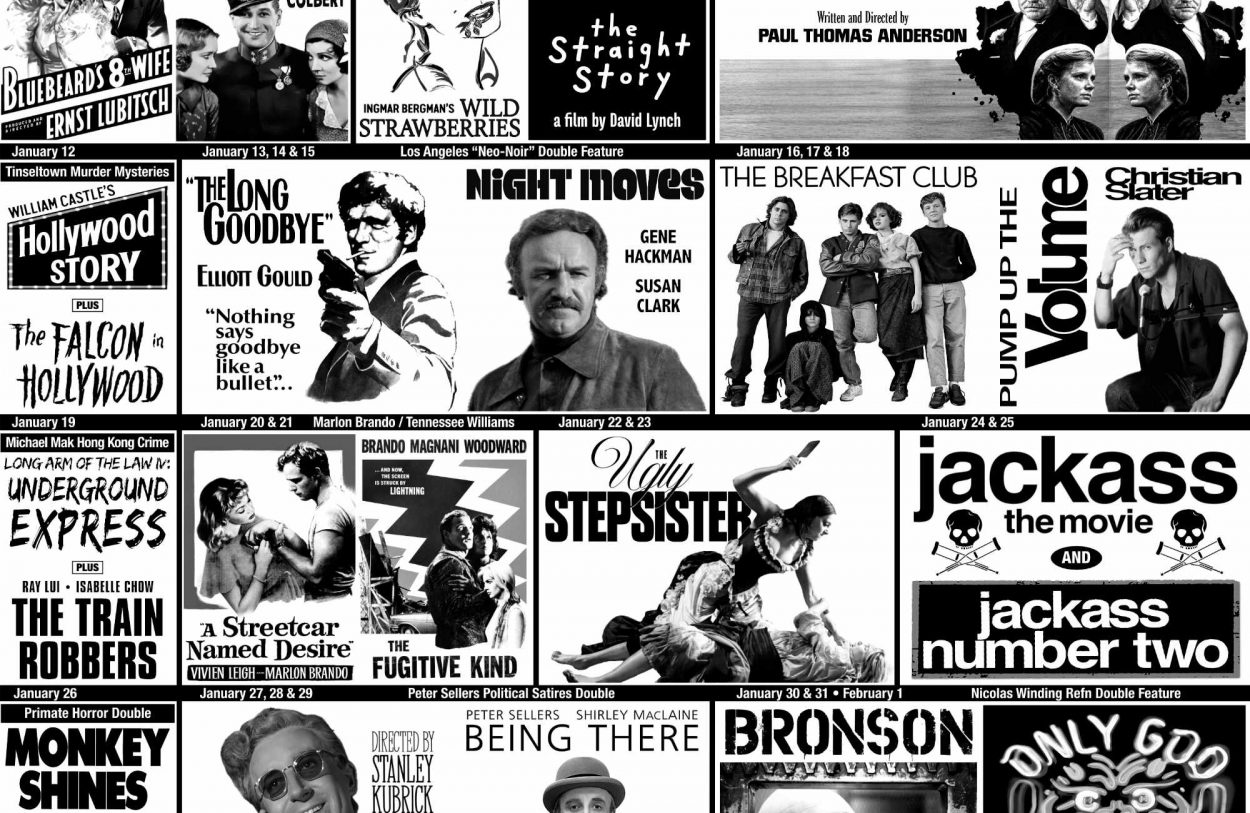Something you may never think about while watching James Frawley’s The Muppet Movie – playing as our kiddie matinee on Saturday and Sunday, September 23rd and 24th – is how they made it. The film opens with our hero, Kermit the Frog, sitting peacefully in his home swamp, singing gently to himself. Nostalgia overwhelms the older members of the audience as he croons Paul Williams’ “The Rainbow Connection” – one of the most optimistic and glorious movie songs this side of The Wizard of Oz. Kermit sits on a log, surrounded by water, strumming a banjo, waving his head back and forth as he sings. In that moment, we know for sure, as audience members, that Kermit is singing all by himself. There are no puppeteers, no special effects, no technicals to distract us. Kermit has come to life.
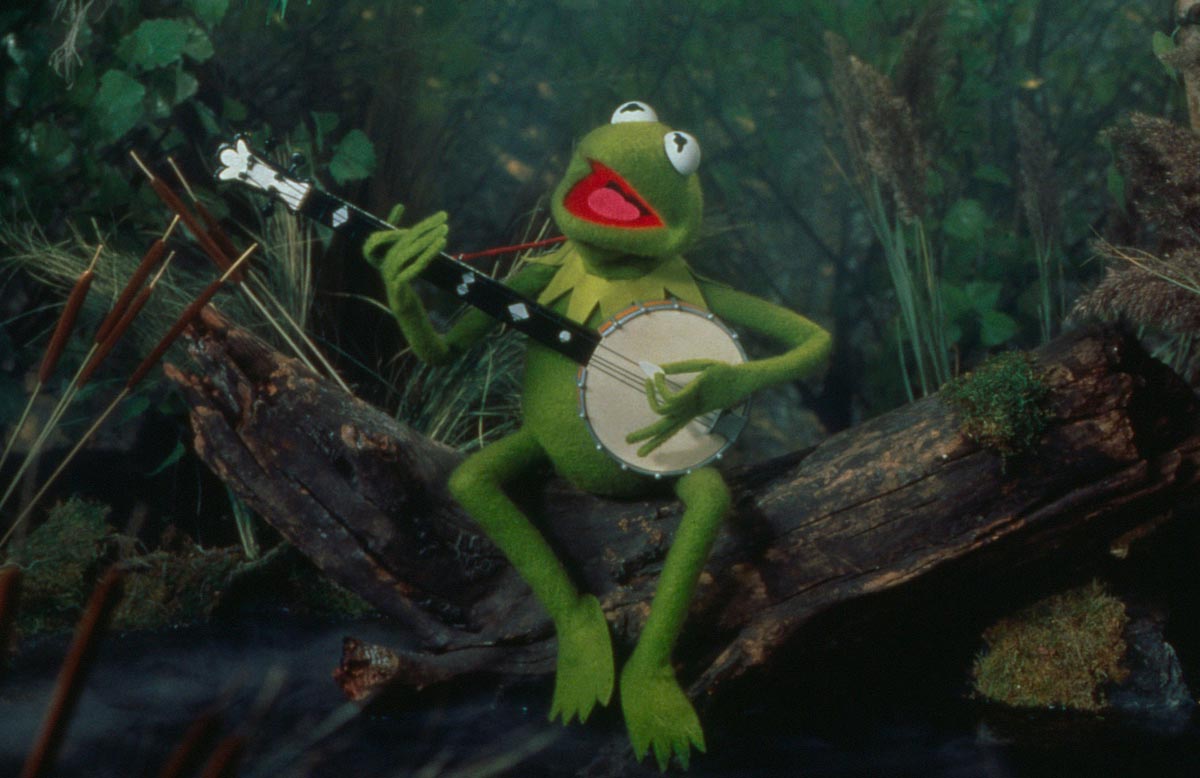
Of course, there were a good teal of technical disciplines at work in that scene. I understand that Jim Henson, Kermit’s puppeteer, was underneath the water in some sort of watertight tank, his hand reaching high up through a hole in the log. Also that Kermit’s hands were operated via remote by a secondary puppeteer. Later on in the movie, Kermit will be seen riding a bicycle, a technical feat I would rather not ponder. As Roger Ebert said in his review, he preferred to think that Kermit was doing it himself.
That’s the magic of The Muppet Movie. It’s a film about talking puppets, but those puppets – those well-known and unassailably optimistic characters – never once feel anything by completely and utterly real. For a film that wears its artificiality on its sleeve, The Muppet Movie might be one of the most honest.
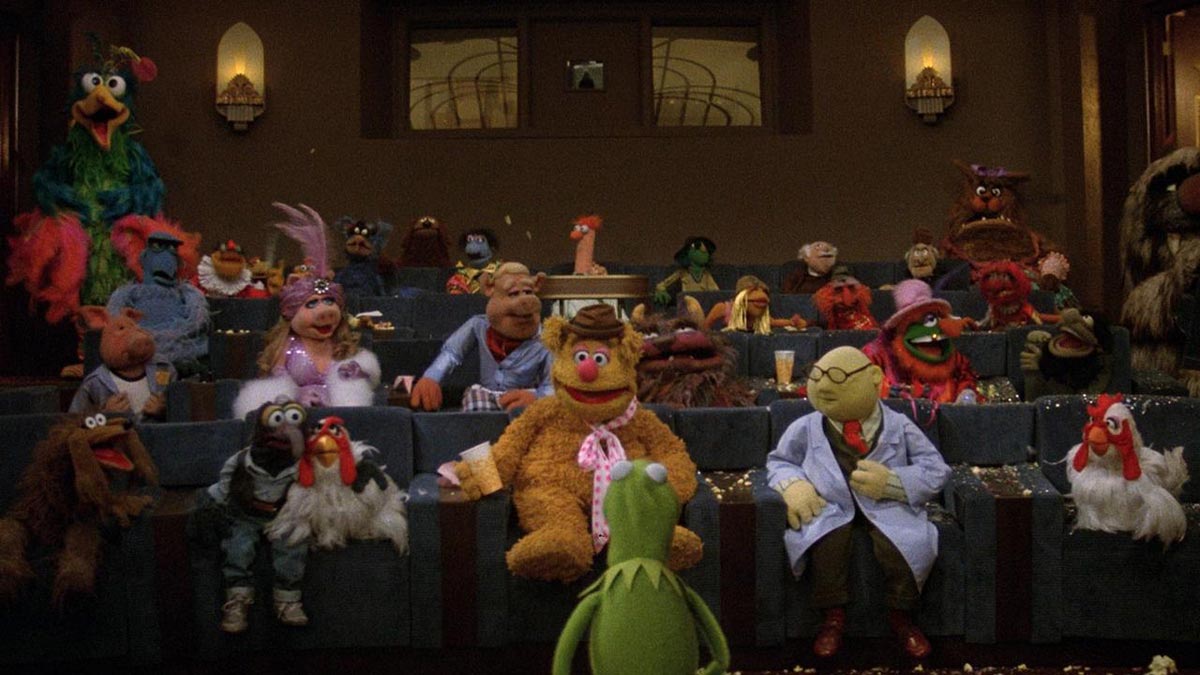
The Muppet Movie is, additionally, is – like most of the Muppet features – staged as a fourth-wall-tumbling revisionist origin story, captured by way of a film-within-a-film; The feature we’re witnessing is not biography, but a story staged by The Muppets themselves, acting as the filmmakers. So there is a self-awareness – indeed, a cheekiness – that hangs over the film. One could say that The Muppet Movie might even read as a satire of Hollywood conventions, were it not so sincere.
And, oh that sincerity. I previously mentioned, in my essay on The Muppets Take Manhattan, that The Muppets, despite their various iterations and over-commercialization, manage to remain wholly pure and innocent. They never suffered through the dark, dank overexposure experienced by the Looney Tunes in the 1990s, nor have they become a personality-free corporate logo like Mickey Mouse (that is: Mickey Mouse when he’s free of his cartoons; some old Mickey shorts are still pretty damn amazing). The Muppets have a cleanliness to their worldview that experienced its most powerfully definitive flashpoint in 1979, exactly when Kermit sings “The Rainbow Connection.” All of our memories of The Muppets practically stem directly from this wistful, beautiful moment.
Which is not to say the Muppets don’t have their darker, raunchier, sillier moments. Indeed, The Muppet Movie feels somewhat chaotic from time to time. The story (within the story) is more or less a road trip wherein Kermit goes to Hollywood to share his music with the world (he cares less about success and more about making people happy). He accumulates Muppet companions, sings songs, and eventually will confront the Hollywood machine (represented by one of the Muppets’ most hilarious celebrity cameos) which will reward him with a standard Rich-and-Famous contract. They meander, get lost on the way, camp under the stars, and make dumb jokes (the “fork in the road” bit is a legitimate groaner).
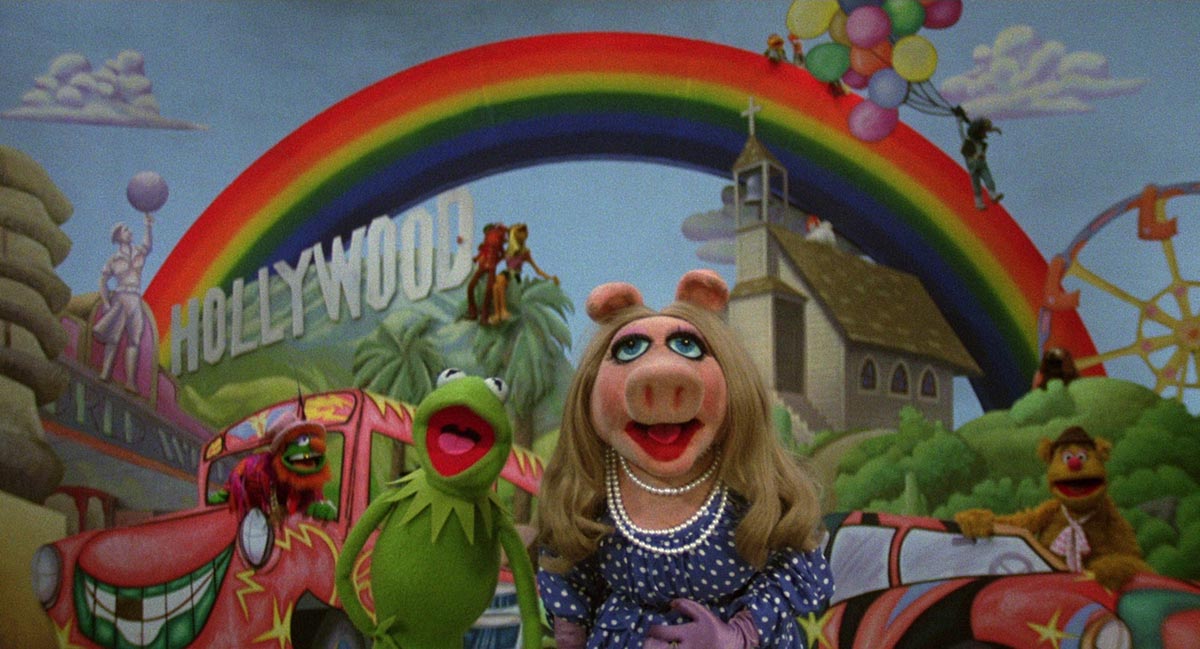
Oh yes, and they’re being chased by a mad fast food mogul (Charles Durning) who, bafflingly, has a Nazi mad scientist (Mel Brooks) in his employ. They will eventually have a western-style shootout in a dusty, abandoned shanty town. This is not a tight plot, in any conventional sense, nor is there much in the way of actual dramatic tension. These elements are but a delivery system for Muppet joy, and no small amount of winking at the audience.
But, despite all the winking the film does, it only ever reads as honest. Not snarky or cynical. Just honest. Because the Muppets are honest. And Jim Henson was honest. And Paul Williams’ silly songs are honest. And Kermit the Frog is scrupulously honest.
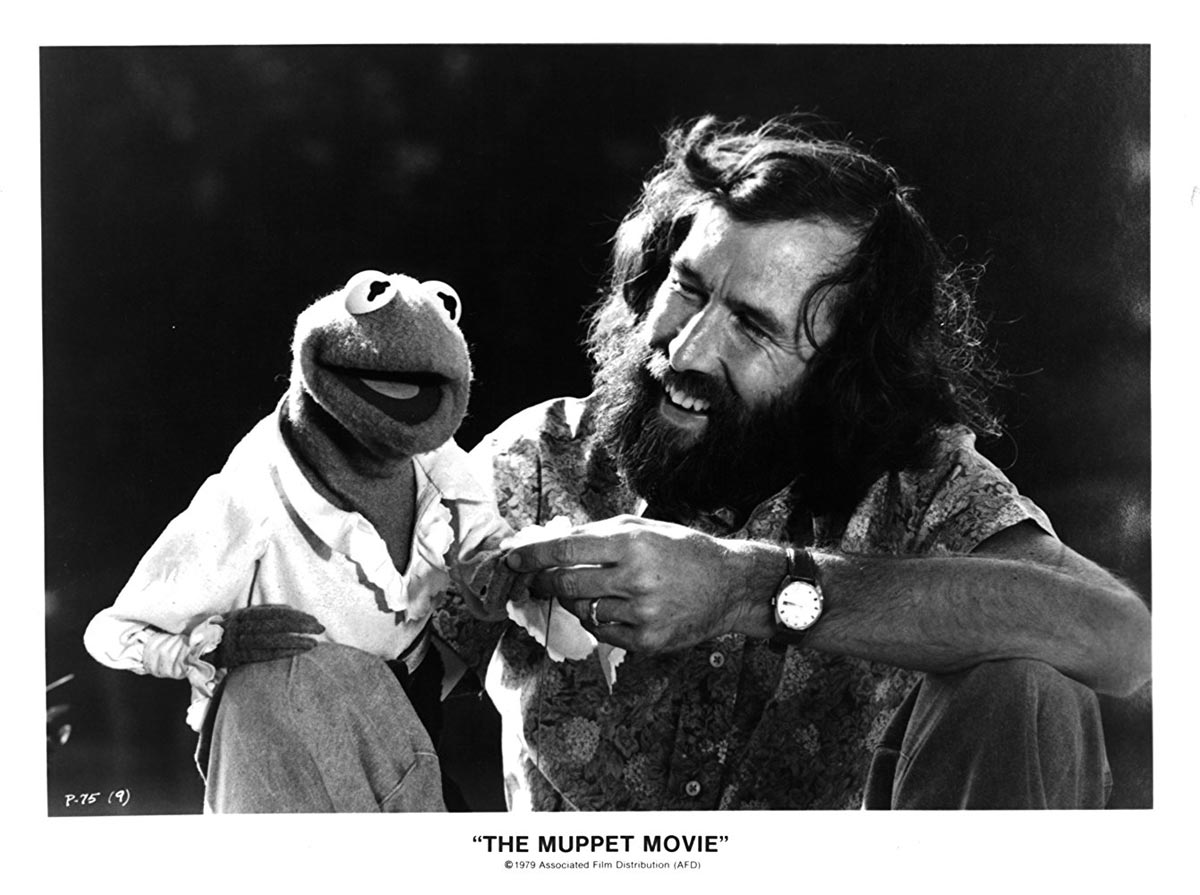
The Muppet sequels all celebrate their own artificiality to varying degrees. The Great Muppet Caper is a noisy burlesque. The Muppets Take Manhattan turns surprisingly tragic. The 1990s Muppet literary adaptations can be seen as productions by repertory players. Indeed, when one is dealing with actors made of cloth and felt, one has to address their own artificiality. But director James Frawley brilliantly folds that artificiality into that ineffable purity possessed by the characters.
Frawley, a TV veteran, started his career working on The Monkees and That Girl, and continuously worked on most of TVs biggest hot shows all the way up to Grey’s Anatomy. His work in theatrical feature films is somewhat trim, having only made – in addition to The Muppet Movie – four films, including a parody of disaster movies called The Big Bus in 1975, and the sex comedy Fraternity Vacation in 1985. He is the very definition of a talented workman in the Hollywood machine. Hollywood would not exist without people like Frawley.
And our joy would be diminished with the absence of The Muppet Movie. What a sweet, funny film. Take your kids. I assure you, they will fall in love.


